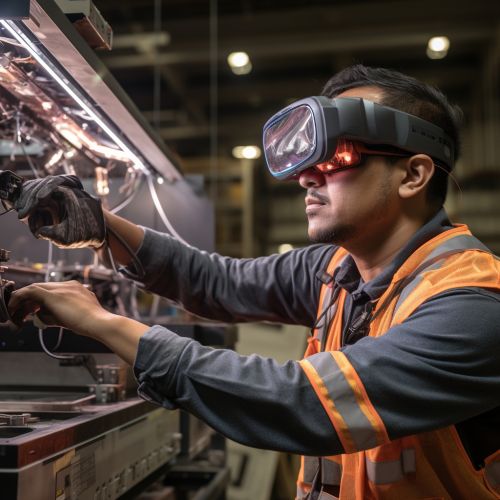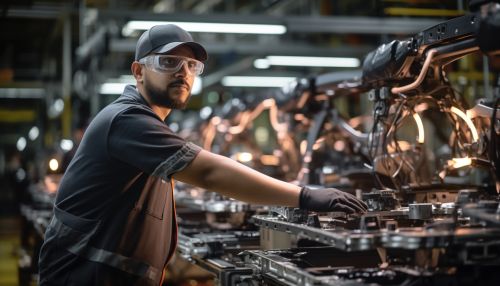The Role of Augmented Reality in Complex Assembly Tasks
Introduction
Augmented Reality (AR) is a technology that overlays digital information onto the physical world, enhancing the user's perception and interaction with their environment. In the context of complex assembly tasks, AR can provide real-time, step-by-step visual guidance, improving efficiency, accuracy, and safety. This article will delve into the role of AR in complex assembly tasks, discussing its applications, benefits, challenges, and future prospects.
Augmented Reality: A Brief Overview
AR is a technology that superimposes computer-generated images onto a user's view of the real world, thus providing a composite view. Unlike Virtual Reality (VR), which creates a completely artificial environment, AR uses the existing environment and overlays new information on top of it. AR can be experienced through devices such as AR glasses, smartphones, tablets, and even projection systems.
Applications of AR in Complex Assembly Tasks
AR has found extensive applications in complex assembly tasks across various industries. These applications can be broadly categorized into the following sectors:
Manufacturing
In the manufacturing sector, AR is used to guide workers through assembly processes. For example, an AR system can project a virtual image of a component onto a real-world assembly, showing the worker exactly where the component should be placed. This reduces the need for extensive training and allows for more efficient assembly processes.
Aerospace
In the aerospace industry, AR is used to assist in the assembly of complex aircraft components. For instance, AR can provide a visual guide for the installation of wiring harnesses, reducing the likelihood of errors and improving assembly efficiency.
Automotive
The automotive industry uses AR to streamline the assembly of vehicles. AR can guide workers through the assembly process, showing them where each part goes and how it should be oriented. This can significantly reduce assembly time and increase the quality of the final product.


Healthcare
In healthcare, AR is used in the assembly of complex medical devices. AR can provide step-by-step instructions, ensuring that each component is correctly placed and oriented. This can improve the quality of the assembled device and reduce the risk of malfunctions.
Benefits of Using AR in Complex Assembly Tasks
The use of AR in complex assembly tasks offers several benefits, including:
Increased Efficiency
AR can significantly increase the efficiency of assembly processes. By providing real-time visual guidance, AR reduces the need for workers to refer to manuals or other reference materials, allowing them to complete tasks more quickly.
Improved Accuracy
AR can improve the accuracy of assembly tasks. By overlaying digital information onto the physical world, AR can show workers exactly where components should be placed, reducing the likelihood of errors.
Enhanced Safety
AR can enhance safety in assembly tasks. For instance, AR can warn workers of potential hazards, such as hot surfaces or moving parts, helping to prevent accidents.
Reduced Training Time
AR can reduce the time required to train workers. By providing step-by-step visual instructions, AR can help workers quickly learn new assembly processes.
Challenges in Implementing AR in Complex Assembly Tasks
Despite its benefits, there are several challenges in implementing AR in complex assembly tasks. These include:
Technological Limitations
While AR technology has advanced significantly in recent years, there are still limitations that can hinder its effectiveness in complex assembly tasks. For example, current AR devices may not provide the level of precision required for certain assembly tasks.
High Costs
The cost of AR devices and software can be prohibitive, particularly for small and medium-sized enterprises. Additionally, the cost of training workers to use AR technology can be significant.
Resistance to Change
Like any new technology, AR can face resistance from workers who are accustomed to traditional assembly methods. This can slow down the adoption of AR in complex assembly tasks.
Future Prospects
Despite these challenges, the future of AR in complex assembly tasks looks promising. With ongoing advancements in AR technology and a growing recognition of its benefits, it is likely that the use of AR in complex assembly tasks will continue to increase.
